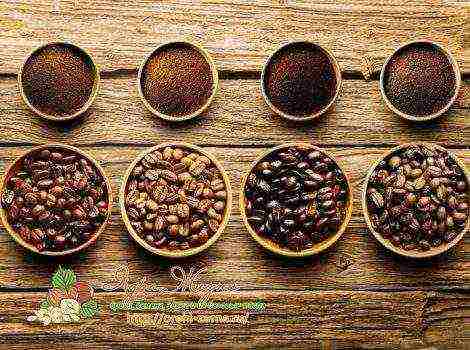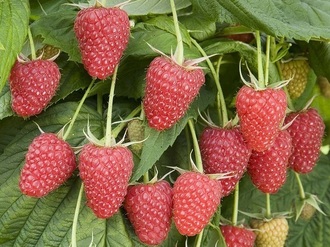Content
- 1 Hardy
- 2 Red-cheeked
- 3 Darling
- 4 Honey
- 5 Russian
- 6 Snegirek
- 7 Triumph North
- 8 Which winter-hardy variety of apricots should you choose?
- 9 Which self-fertile apricot variety should you choose?
- 10 What varieties of apricots are resistant to moniliosis?
- 11 Which columnar apricot variety should you choose?
- 12 What varieties are there by ripening time?
- 13 Conclusions about the best varieties of apricot
- 14 Apricot varieties for the Moscow region and the middle lane
- 15 The best early varieties of apricots
- 16 The best medium varieties of apricots
- 17 The best late varieties of apricots
- 18 Black apricot varieties.
- 19 Columnar varieties of apricot
With the advent of winter-hardy varieties, apricot ceased to be exotic, because today in central Russia you can independently grow a fruiting tree on a site. The main thing is to choose the right variety.
In the central regions of Russia, the climate is unstable. In winter and early spring, fastidious crops (including apricots) can freeze slightly, and then you should not expect a rich harvest. But you really want to taste delicious, juicy and healthy fruits!
Plant cold and frost-resistant apricots in your garden. And then, with proper care of the plant, you will be able to get a good harvest.
Hardy
The name of this apricot variety speaks for itself. The plant easily adapts to unfavorable conditions, while not only the tree itself is not afraid of severe frosts (due to the fact that it has a thick bark), but also its buds, which in other varieties often die during spring frosts.
The tree grows quite large in a short period of time, but begins to yield only 5-6 years after planting. The fruits are medium in size, round in shape and golden in color with a coral shade. The skin is slightly pubescent, the flesh is very sweet and aromatic, orange in color.
| Appointment | Harvest | Tree height (m) | Fruit weight (g) | Productivity (kg per tree) |
|
1st decade August |
5 | 30-45 | 60-80 | |
Red-cheeked
This winter-hardy apricot was bred in 1947 and over time has become very popular with summer residents. The variety has good yields and the ability to adapt to adverse conditions. To preserve these important qualities, such popular hybrids as Nikitinsky, Nikolaevsky, Son of Krasnoshcheky, Krasnoshcheky Salgirsky and others were bred on the basis of Krasnoshcheky.
Red-cheeked is a mid-season variety. The tree grows medium in size, with a spreading, rounded crown. The fruits ripen round or ovoid, their skin is pubescent, golden-orange with a slight reddish blush. The pulp is very tasty, sweet and sour, aromatic.
The advantage of this variety is also the fact that the tree begins to bear fruit already 3-4 years after planting the seedling.
| Appointment | Harvest | Tree height (m) | Fruit weight (g) | Productivity (kg per tree) |
|
2nd half july |
4-5 | 40-60 | up to 90 | |
Darling
The tree of this variety grows very quickly and reaches a height of 5 m. It is distinguished by a paniculate crown and straight shoots of medium thickness.Already 3-4 years after planting, fragrant fruits with a bright yellow skin covered with red dots and sweet and sour yellow flesh ripen on the plant.
The Favorite variety is resistant not only to frost, but also to diseases, pests and bright sun.
| Appointment | Harvest | Tree height (m) | Fruit weight (g) | Productivity (kg per tree) |
|
1st half August |
4,5-5 | 25-30 | 50-60 | |
Honey
The tree of this variety can reach a height of 4 m and has a voluminous and spreading crown. Small fruits grow on it. Their skin is yellow, with small red dots and slight pubescence. The pulp is of medium density, yellow in color, fibrous-granular and sweet in taste.
The Medovy variety without shelter can withstand a drop in temperature to –35 ° С, and in snowy winters - and all –40 ° С.
| Appointment | Harvest | Tree height (m) | Fruit weight (g) | Productivity (kg per tree) |
|
1st half August |
2-4 | 15 | 15-20 | |
Russian
The tree of this variety grows rather low, it is convenient to harvest from it. At the same time, without shelter, it is able to withstand frosts down to –30 ° С.
Fruits ripen round, orange in color, with excellent taste. Their flesh is deep yellow, tender and very juicy. The tree begins to bear fruit in the 5-6 year field of planting.
| Appointment | Harvest | Tree height (m) | Fruit weight (g) | Productivity (kg per tree) |
|
Mid july |
3,5-4 | 60-65 | 80 | |
Snegirek
This is the undoubted leader in winter hardiness. With light cover, Snegirek apricots are grown even in the North. Not only is this small tree (up to 1.5 m high) not afraid of frosts (including spring ones, since it blooms late), but it still grows well on any soils, even not very fertile ones.
This variety has other advantages: the fruits are very elastic, therefore they are well stored (until mid-winter) and are not damaged during transportation. Their color is light yellow with a burgundy blush, the pulp is sweet, juicy and aromatic, but sometimes it can taste a little bitter near the skin.
However, Snegirek still has one drawback: it is not resistant to diseases such as leaf spot and moniliosis. If it often rains in the spring and summer, the tree needs careful maintenance and regular treatments (for example, with Xopyc 75WY) in order to prevent the development of dangerous diseases.
| Appointment | Harvest | Tree height (m) | Fruit weight (g) | Productivity (kg per tree) |
|
Middle August |
1,2-1,5 | 15-18 | 7-10 | |
Triumph North
This winter-hardy variety was obtained by crossing two hardy varieties: Krasnoshchekiy and Severny early. On a tree with a spreading crown, branches are located at an angle of 45-50 degrees.
Fruits are rather large, round or oval in shape, may be slightly flattened. The peel of apricots is slightly pubescent, the taste is slightly sour, yellow-orange in color with a red-burgundy blush. The pulp of the fruit is orange, very juicy, sweet and tender.
And that's not all the pluses of the Northern Triumph! The flower buds of this tree have very good resistance to recurrent spring frosts. And the plant is also not susceptible to damping, as well as damage by dangerous pests and diseases (moniliosis, cytosporosis, verticillosis, clasterosporium).
| Appointment | Harvest | Tree height (m) | Fruit weight (g) | Productivity (kg per tree) |
|
End of July - early August |
3-4 | 40-55 | 50-64 | |
Growing a fruiting apricot tree in your own summer cottage is real! Moreover, even in an unstable and rather cold climate. Cultivate suitable winter-hardy varieties and you will succeed.
Every gardener dreams of growing an apricot tree. The fruit of this plant is of undoubted benefit. It is delicious and aromatic. It is usually eaten fresh. But it is also ideal for making preserves, compotes, jams. Having planted just a couple of apricot varieties, the summer resident will receive a rich harvest of ripe fruits. True, it is not so easy to decide on a specific variety of this fruit tree. After all, the assortment is striking in its variety.This article will describe the best varieties of apricots, which are characterized by resistance to ailments and cold.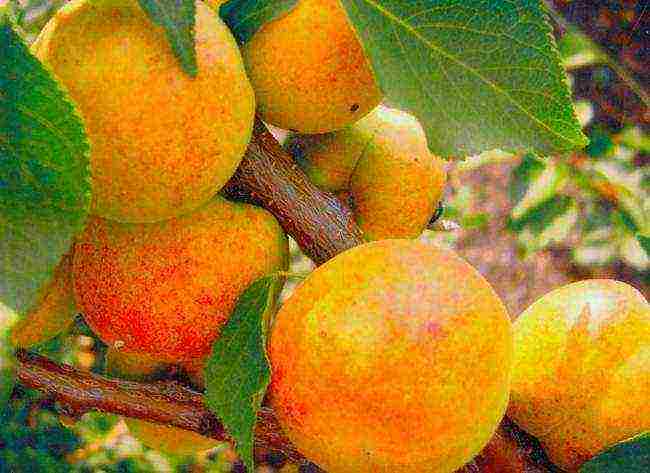
Which winter-hardy variety of apricots should you choose?
Apricot trees grow on almost every summer cottage. The plant is very thermophilic, but today, thanks to the labor of breeders, a lot of cold-resistant species have appeared. 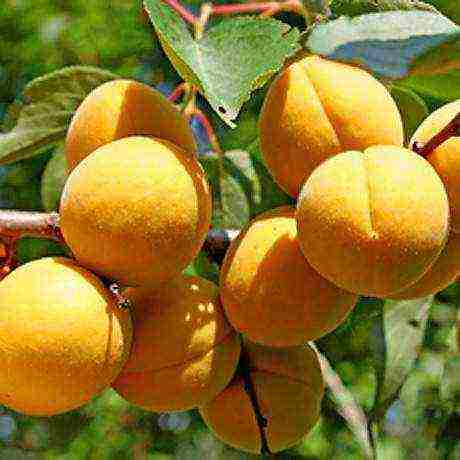 And if earlier this fruit crop was grown mainly in the southern regions, it became possible to plant apricots in areas that are distinguished by a colder microclimate. Perhaps an interesting article will be about domestic and foreign early varieties of raspberries.
And if earlier this fruit crop was grown mainly in the southern regions, it became possible to plant apricots in areas that are distinguished by a colder microclimate. Perhaps an interesting article will be about domestic and foreign early varieties of raspberries.
Below are the best varieties of apricot, which are characterized by increased winter hardiness:
- Hardy.
- Best Michurinsky.
- Red-cheeked.
Apricot Hardy
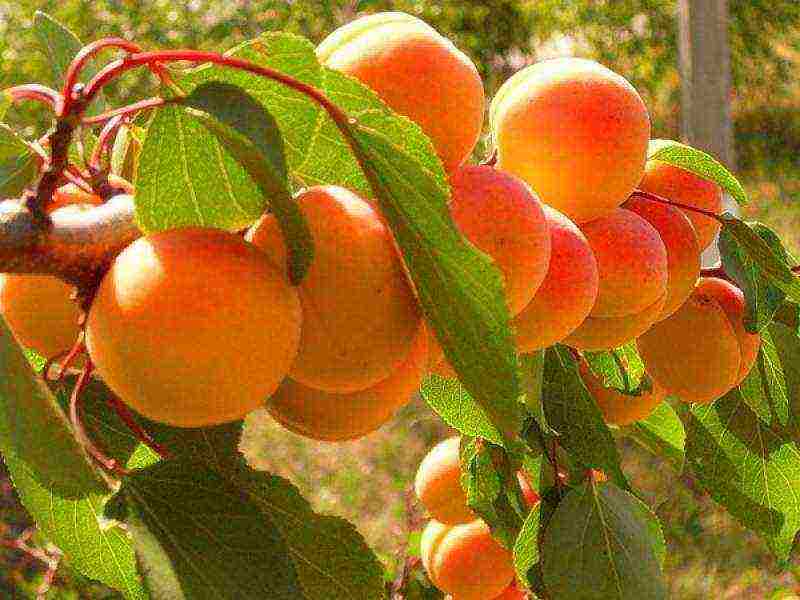 This variety is recognized as the most hardy in terms of withstanding low temperature indicators. Therefore, summer residents of the Moscow region often choose this variety. It should be noted that winter-hardy properties extend not only to the tree itself, but also to flower buds.
This variety is recognized as the most hardy in terms of withstanding low temperature indicators. Therefore, summer residents of the Moscow region often choose this variety. It should be noted that winter-hardy properties extend not only to the tree itself, but also to flower buds.
The plant is vigorous. The crown is large, rounded, medium thickened. Hardy enters fruiting 5 years after planting. The yield is high and stable. At least 70 kilograms of fruit are usually harvested from one tree. Each fruit weighs between 30 and 45 grams. The skin color is golden orange. There is a carmine blush. The pubescence of the surface is minimal. The pulp is orange. The taste is pleasant sweet. The advantages of the variety include the presence of good immunity to most ailments and the self-fertility of the plant.
Apricot Best Michurinsky
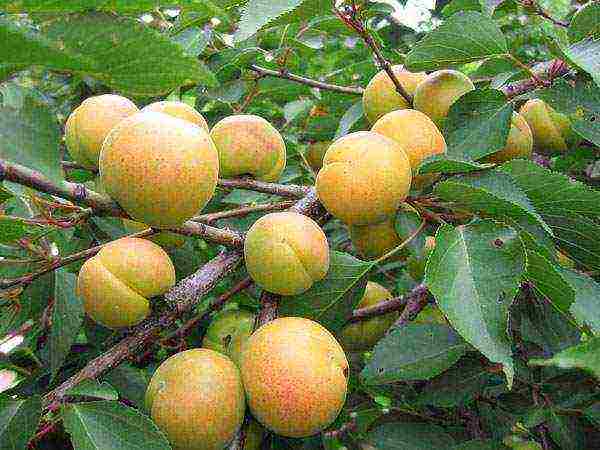 It is worth considering the description of the Apricot variety Best Michurinsky as one of the most popular at the moment. The variety is medium late. It is characterized by good yield and high winter hardiness. The best pollinator for Michurinsky is the Tovarish variety. The tree begins to bear fruit after 5 years from the moment of planting. Fruits ripen in the first decade of August. Apricots are small in size. Their weight does not exceed 15 grams. The shape is flattened-rounded. Yellow color. There is a slight blush. The pulp is dense, yellow, has a sweet and sour taste.
It is worth considering the description of the Apricot variety Best Michurinsky as one of the most popular at the moment. The variety is medium late. It is characterized by good yield and high winter hardiness. The best pollinator for Michurinsky is the Tovarish variety. The tree begins to bear fruit after 5 years from the moment of planting. Fruits ripen in the first decade of August. Apricots are small in size. Their weight does not exceed 15 grams. The shape is flattened-rounded. Yellow color. There is a slight blush. The pulp is dense, yellow, has a sweet and sour taste.
Apricot Red Cheeked
It is an inexpensive, popular apricot. It is highly appreciated by domestic summer residents for its frost resistance and unpretentiousness. The seedling takes root not only in the northern, but also in the southern climate. The tree produces large, rounded fruits. The harvest ripens in the month of July. The pulp is sweet-sour taste, pronounced aroma.
Which self-fertile apricot variety should you choose?
Self-fertility is a useful property of the apricot tree; under it, the plant's ability to self-pollinate is increased.
Due to this, the summer resident is guaranteed to receive a rich harvest, regardless of whether another fruit tree grows nearby or not. Therefore, many farmers tend to plant self-fertile apricot varieties on their personal plot.
Below are the best self-fertile apricot varieties that are enjoying good popularity:
- Dessert.
- Sardonyx.
- Northern Triumph.
Apricot Dessert
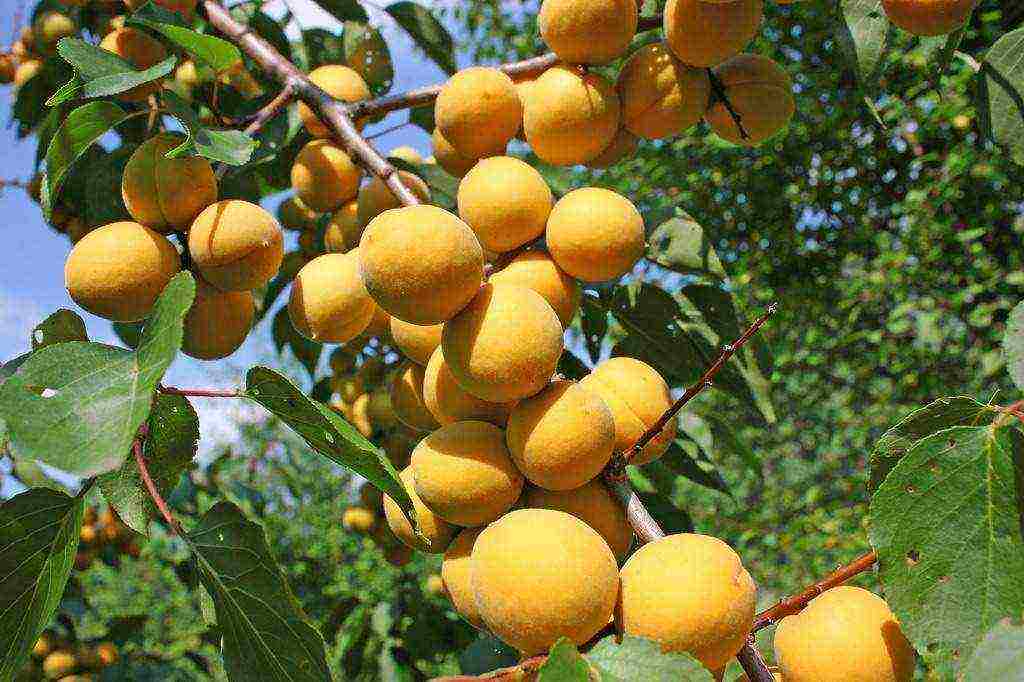 Many beginners and already experienced summer residents choose this variety. Therefore, it makes sense to consider the description of the Dessert apricot variety in more detail. A tree of medium height grows. The crown is round and rather sparse. Annual shoots are thick. In the middle lane, there is a good winter hardiness of the plant and flower buds.
Many beginners and already experienced summer residents choose this variety. Therefore, it makes sense to consider the description of the Dessert apricot variety in more detail. A tree of medium height grows. The crown is round and rather sparse. Annual shoots are thick. In the middle lane, there is a good winter hardiness of the plant and flower buds.
The fruits are medium in size. Their mass reaches 35-40 grams. The shape is rounded, strongly flattened from the sides. The surface is painted yellow. Pubescence is strong. The pulp is light orange, crispy, medium in density. The taste is pleasant, sweet. There is a hint of sourness. The aroma is pronounced. Fruits ripen in mid-July.
Apricot Triumph north
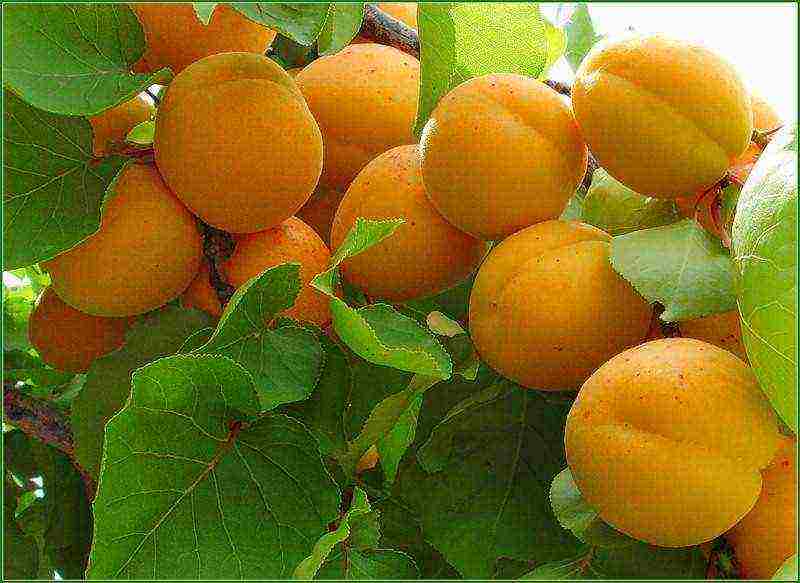 The plant is vigorous. Usually reaches 4 meters in height. The crown is wide, medium branching.The fruits are medium in size. Their weight is about 60 grams. The shape of the apricot is oval, asymmetric. Ripe fruits are colored yellow-pink. The pubescence of the skin is not strong. The pulp is juicy, sweet and sour. Triumph begins to bear fruit at the 5th year of life. From the age of 10, more than 50 kilograms of the crop are harvested from one plant.
The plant is vigorous. Usually reaches 4 meters in height. The crown is wide, medium branching.The fruits are medium in size. Their weight is about 60 grams. The shape of the apricot is oval, asymmetric. Ripe fruits are colored yellow-pink. The pubescence of the skin is not strong. The pulp is juicy, sweet and sour. Triumph begins to bear fruit at the 5th year of life. From the age of 10, more than 50 kilograms of the crop are harvested from one plant.
Numerous reviews of the Northern Triumph apricot indicate that the variety is the best for growing in Siberia. Among the advantages summer residents note self-pollination, early maturity, high productivity. However, it must be borne in mind that fruiting is very unstable.
Apricot Sardonyx
This is a medium late variety. The apricot Sardonyx ripens in early August. The tree is winter-hardy, medium-sized, fast-growing and fruitful enough. The fruits are large. They are ovoid. The average weight is 50 grams. The plant enters fruiting at the 4th year of life.
What varieties of apricots are resistant to moniliosis?
Often, apricot infects moniliosis, fungicides are used to combat this disease, however, chemical treatment of wood is not always safe.
In addition, the process becomes more difficult in rainy weather. 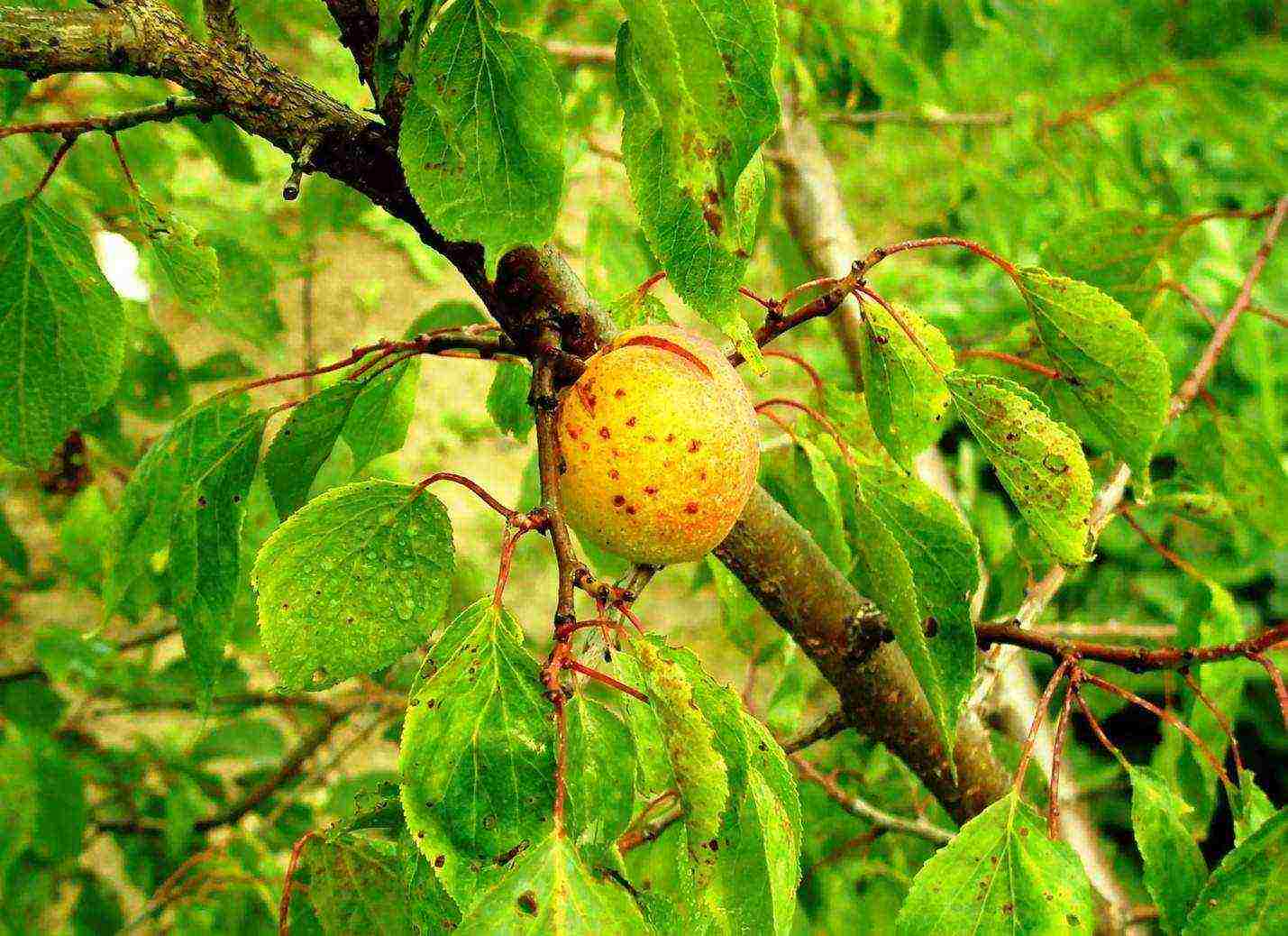 Therefore, gardeners often plant apricot varieties resistant to moniliosis in their area.
Therefore, gardeners often plant apricot varieties resistant to moniliosis in their area.
These varieties include:
- Special Denisyuk.
- Monastyrsky.
- Goldrich.
Apricot Special Denisyuk
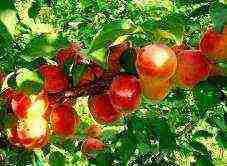 Today, many varieties are known that are immune to moniliosis. The most demanded is the Special Denisyuk. Late ripening variety. The tree is medium-sized. The crown is not particularly thickened. Productivity and winter hardiness are high. The fruits are characterized by an unusual carmine color. Largest in size. Good-tasting pulp, juicy. Ripe fruits are capable of not falling off the branches for a long period.
Today, many varieties are known that are immune to moniliosis. The most demanded is the Special Denisyuk. Late ripening variety. The tree is medium-sized. The crown is not particularly thickened. Productivity and winter hardiness are high. The fruits are characterized by an unusual carmine color. Largest in size. Good-tasting pulp, juicy. Ripe fruits are capable of not falling off the branches for a long period.
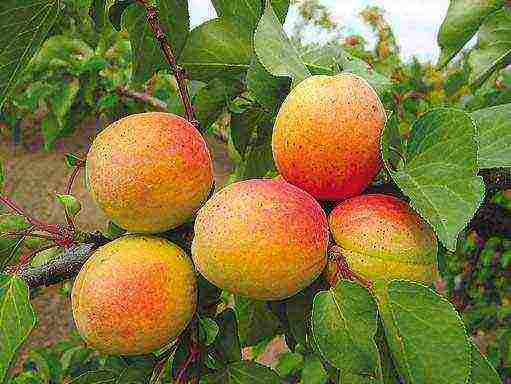 Apricot Monastic
Apricot Monastic
A variation of the average ripening period. The plant is short. The crown is round. Winter hardiness and productivity are good. The fruit is quite large. They are yellow-orange in color. There is no blush. Monastic is distinguished by its unsurpassed aroma and excellent taste. For which he was very fond of domestic gardeners.
Apricot Goldrich
The plant is medium-sized. The crown is spreading, wide. Goldrich is characterized by yield, winter hardiness, immunity to moniliosis and shark. At the moment, this is the largest-fruited variety. The apricot mass reaches 90 grams. There are specimens weighing more than 100 grams. The shape of the fruit is oval, slightly flattened on the sides. The skin is orange with a slight red blush. The pulp is firm, dark orange. The aroma is light, pleasant.
Which columnar apricot variety should you choose?
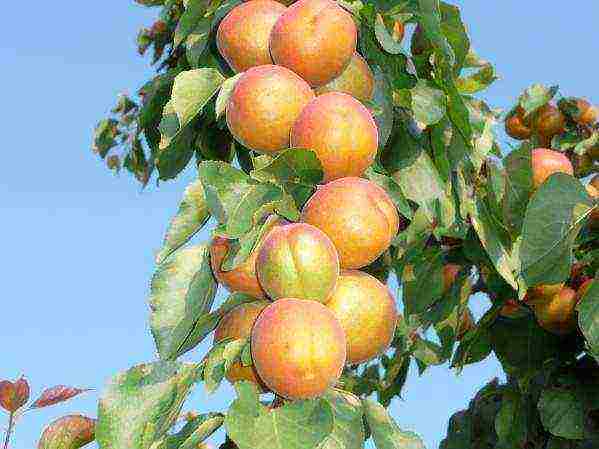 Not every summer resident can boast of a large personal plot. And everyone wants to create a garden. In the case of a limited area, it makes sense to pay attention to the columnar varieties of fruit trees. They take up little space, grow in the form of a column, from which small branches extend. Having planted the best varieties of columnar plums and apricots, the garden will look neat and beautiful.
Not every summer resident can boast of a large personal plot. And everyone wants to create a garden. In the case of a limited area, it makes sense to pay attention to the columnar varieties of fruit trees. They take up little space, grow in the form of a column, from which small branches extend. Having planted the best varieties of columnar plums and apricots, the garden will look neat and beautiful.
There are many varieties of columnar apricots. But the Prince variety is especially popular today. This is the most productive tree. The plant is early maturing, does not need a pollinator, and has excellent resistance to low temperatures and diseases. The reviews are mostly positive.
What varieties are there by ripening time?
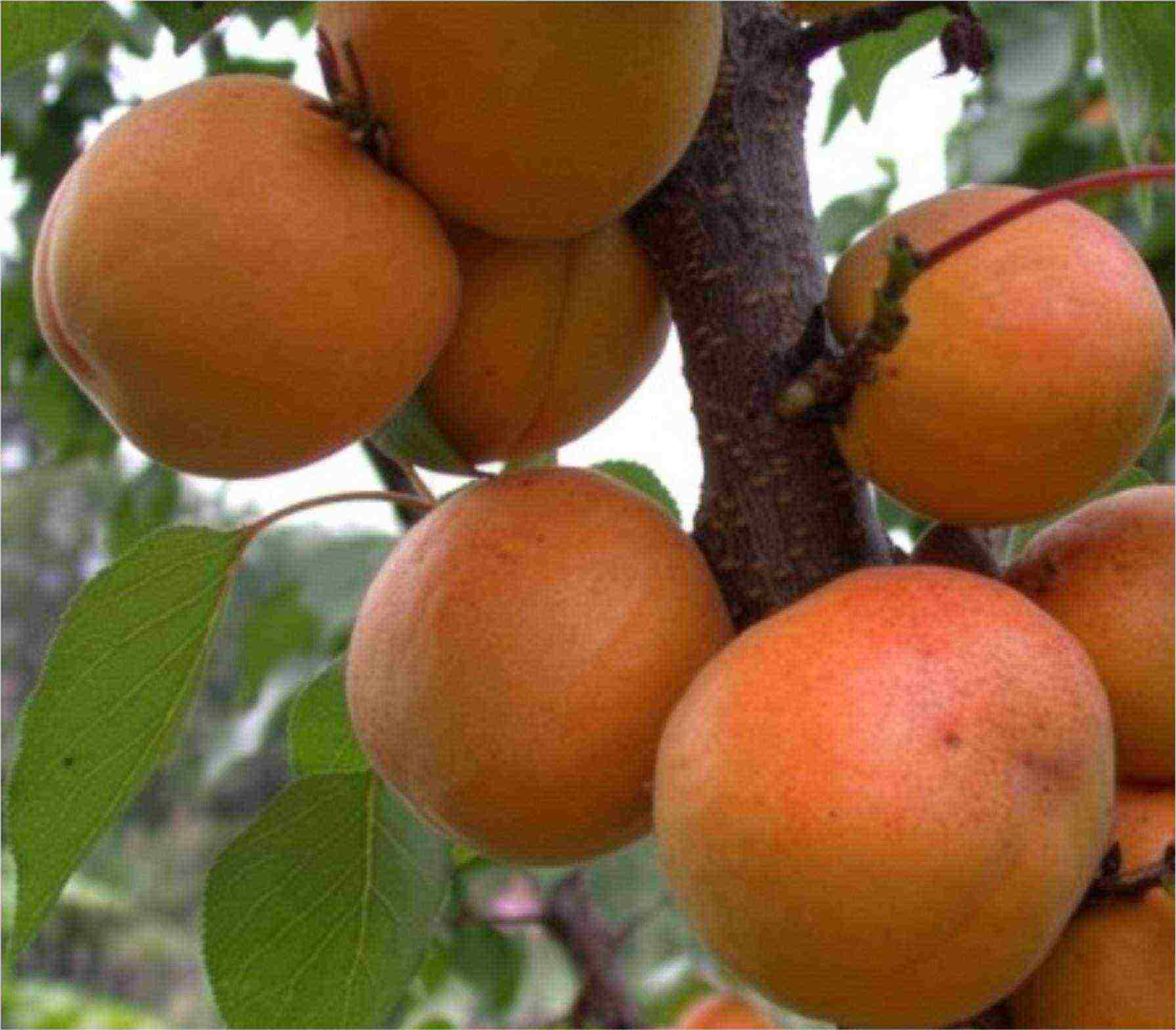 Depending on the period of fruit ripening, all apricots are divided into early ripening, mid-ripening and late-ripening. The first is the Alyosha variety. Also good reviews about apricot Zhigulevsky souvenir, June. Among mid-season varieties, Altair, Olympus, Aviator, Amur, Phelps, Aquarius are most often chosen. Having decided to plant a late variety of apricot, it makes sense to pay attention to the apricot Hargrand, Sirena, Kostyuzhensky, Iskra. It is advisable to plant several types of fruit trees with different ripening periods.Then the summer resident will enjoy fresh fragrant fruits for much longer.
Depending on the period of fruit ripening, all apricots are divided into early ripening, mid-ripening and late-ripening. The first is the Alyosha variety. Also good reviews about apricot Zhigulevsky souvenir, June. Among mid-season varieties, Altair, Olympus, Aviator, Amur, Phelps, Aquarius are most often chosen. Having decided to plant a late variety of apricot, it makes sense to pay attention to the apricot Hargrand, Sirena, Kostyuzhensky, Iskra. It is advisable to plant several types of fruit trees with different ripening periods.Then the summer resident will enjoy fresh fragrant fruits for much longer.
Conclusions about the best varieties of apricot
Thus, there are many varieties of apricot today. Despite the fact that this fruit is thermophilic, it can be easily grown even in the northern region. The main thing is to get a winter-hardy seedling. To choose the best variety, you need to understand the classification of fruit trees, the characteristics of each variety. Having decided on a specific species, you should study the features of planting and growing this crop. Usually, apricot is grafted onto plums, peaches or cherries. Look at the article: How and in what ways is a watermelon grafted on a pumpkin?
1. Varieties of apricots for the Moscow region and the middle zone.
2. The best early varieties of apricots.
3. Medium varieties of apricots.
4. Late varieties.
5. Varieties of black apricots.
6. Columnar varieties of apricots.
Apricot varieties for the Moscow region and the middle lane
Apricot is traditionally a southern crop, but thanks to the efforts of domestic breeders, it is successfully grown in the difficult climatic conditions of the Moscow region and the middle zone. It is worth purchasing apricot varieties zoned for these places, which have high winter hardiness and self-fertility, as well as the ability to survive possible thaws and spring frosts without much loss. We offer an overview of the most popular types of apricots.
"Lel"
"Lel" is a variety with a very early ripening of fruits, is self-fertile. The yield is small, but if other types of apricots are grown in the neighborhood, the harvest will increase.
- Average yields are about 20 kg per tree.
- Orange fruits weighing 20 gr. excellent taste with easily separable pits. Ripening time - the end of July.
- Spreading trees up to 3 m in height.
- Gives the first harvests in the third or fourth year after planting the seedling.
- It perfectly tolerates frosts down to -30. Suitable for growing in the Central region.
- The susceptibility to diseases and pests is average.
Varietal advantages: excellent taste characteristics of fruits, early maturity, good transportability, decent winter hardiness of the bark and buds.
Minuses: small fruit size, large stone, can be damaged by clasterosporia and aphids without preventive measures.
"Tsarsky"
"Tsarskiy" is an early maturing, self-fertile species, brings stable, but small yields.
- Average yields are 20-30 kg per tree.
- Fruits are yellow with a ruddy barrel weighing up to 20 g with sweet and sour juicy pulp, ripen in early August.
- The tree is moderately vigorous 3-4 m.
- In the third or fourth year after planting, the seedlings begin to bear fruit.
- Strong winter hardiness (up to -40). It is successfully grown in the Moscow region and the middle lane.
- Good resistance to major diseases, it needs protection from pests.
Varietal advantages: early maturing, self-fertile, highly winter-resistant.
Minuses: small in size fruits, low yield, the stone is poorly separated from the pulp.
"Aquarius"
"Aquarius" is a high-yielding, self-fertile, mid-season apricot variety.
- Productivity is regular high 50-60 kg per tree.
- Fruits, yellow with a blush, weighing 25-30 g with tender juicy pulp, ripen in mid-August.
- The tree grows up to 5-6 m in height.
- Begins to bear fruit in the third or fourth year.
- Excellent frost resistance. The variety is zoned for planting in the Central region.
- Resistance to diseases and pests is satisfactory.
Varietal advantages: high-yielding, self-fertile, frost-resistant, easy separation of the bone from the pulp.
Minuses: large tree growth complicates maintenance and harvesting.
"Russian"
"Rossiyanin" is remarkable for its early ripening of fruits and high yield.
- The yields are plentiful up to 80 kg per tree.
- Yellow-orange fruits weighing 50-60 g with tasty juicy pulp. Ripening time - the end of July.
- The tree is 3-4 m high.
- The first crop can be obtained in the fifth year of growth.
- Winter hardy, withstands frosts down to -30.Suitable for growing in the suburbs and regions of the middle lane.
- Susceptibility to diseases is average.
Varietal advantages: early ripening, abundant harvests, large fruits, high winter hardiness.
Minuses: average disease resistance.
"Hardy"
"Hardy" - has a very good winter hardiness of wood and buds. The species is self-fertile, fruitful.
- The yield is 60 kg per tree.
- Fruits, orange with a reddish side, weighing 40 g with aromatic sweet pulp. The harvest ripens in the first half of August.
- The trees are vigorous, 5 m tall.
- It brings the first harvests in the fifth or sixth year after planting the seedling.
- It tolerates severe frosts. It is successfully grown in the Moscow region and central Russia.
- Disease resistance is satisfactory.
Varietal advantages: excellent winter hardiness, stable high yields, self-fertility.
Minuses: the tallness of the tree makes it difficult to care for and harvest.
"Honey"
Apricot "Honey" has high frost resistance, good yield, but self-fruitless and needs neighbors-pollinators.
- It brings yields of 15-20 kg per tree.
- Fruits are golden-yellow with reddish specks weighing 15 g with delicate sweet pulp, ripen in the first half of August.
- Spreading tree with a height of about 4 m.
- First fruiting in the third or fourth year.
- Calmly withstands frosts down to -35 and above. Suitable for planting in the suburbs and central Russia.
- Disease and pest resistance is low. Needs protective measures.
Varietal advantages: high winter hardiness, early maturity, excellent fruit taste, easy separation of the seed.
Minuses: small fruits, self-fertility, low resistance to diseases and pests.
The best early varieties of apricots
"Northern Triumph"
Early ripening variety, self-fertile with excellent yield and winter hardiness.
- The yield reaches 60 kg / s tree.
- Fruits are yellow-orange, weighing 50 g with delicate sweet pulp. Ripens in early August.
- Spreading tree with a height of 4 m.
- Begins fruiting in the fifth year of growth.
- Winter hardiness is excellent. It can be grown in the Central Black Earth Zone, in Siberia, in the Urals.
- High resistance to major diseases.
Varietal advantages: fruitful, self-fertile, early maturing, frost-resistant.
Minuses: fruiting is unstable, average winter hardiness of the buds.
"Khabarovsk"
"Khabarovskiy" is a variety of apricot with early ripening, stable yield and self-fertility.
- Annual yields are high 35 kg per tree.
- Light yellow with a slight blush, fruits weighing 30 g with dense sweet and sour pulp, ripen at the end of July.
- Spreading tall tree 4-5 m.
- In the fourth or fifth year, the tree gives its first harvest.
- Winter hardiness at an average level. The variety is recommended for the Primorsky and Khabarovsk Territories.
- Relatively resistant to major diseases.
Varietal advantages: early maturing, self-fertile, large tasty fruits, high yield.
Minuses: average winter hardiness, low transportability, can be damaged by the moth.
"Pineapple"
The Pineapple variety is characterized by self-fertility and high productivity.
- Yields are 50 kg, and sometimes up to 120 kg in good years.
- Fruits are yellow, large, weighing 35-45 g with aromatic sweet pulp. Ripening time is the second half of July.
- A tree of medium height up to 4 m with a dense crown.
- Fruiting begins in the third or fourth year after planting the seedling.
- Small winter hardiness (up to -25). It is grown in areas with a warm temperate climate.
- Good disease resistance.
Varietal advantages: self-pollinated, high-yielding, drought-resistant, tasty fruit for universal use.
Minuses: average frost resistance, when ripe, apricots quickly crumble from the branches, if you delay harvesting.
"Champion of the North"
“Champion of the North” is an early ripening variety that gives good yields and is self-fertile.
- The yield is 18-25 kg per tree.
- Fruits are orange with a blush, weighing 30-60 g, with sweet and sour pulp and an easily separable stone. The kernel is sweet at the stone. Ripening time - end of July.
- Strong growth tree with sparse crown.
- In the fourth year after planting, it brings the first harvest.
- High winter hardiness makes it possible to successfully grow this species in the Central Black Earth Region.
- Disease and pest resistance is good, but preventive measures are needed to protect them.
Varietal advantages: high frost resistance, self-fertility, early maturity, good transportability.
Minuses: insufficiently juicy pulp, susceptibility to clasterosporium disease in rainy summers.
The best medium varieties of apricots
"Red-cheeked"
"Red-cheeked" - one of the most common varieties of apricot, unpretentious, fruitful and self-fertile.
- Brings bountiful harvests up to 90 kg per tree.
- Fruits are orange with a bright blush, weighing 40-50 g with aromatic sweet and sour pulp. The bone is easily separated.
- A tree up to 4 m tall with a spreading crown.
- The first crop is harvested in the third or fourth year after planting the seedling.
- Winter hardiness is satisfactory. Recommended for planting in the North Caucasus and Lower Volga regions.
- Disease resistance is relative.
Varietal advantages: self-pollinated, fast-growing, high-yielding, large fruits of excellent taste.
Minuses: when overripe, apricots quickly crumble, needs protective measures against diseases.
"Son of the Red-cheeked"
"Son of the Red-cheeked" - self-pollinated, mid-season, giving good yields.
- Harvest weight 30 kg per tree.
- Fruits are orange with a dense blush, weighing 35-55 g, sweet and sour, juicy, ripen at the end of July.
- The tree is tall with a dense crown.
- The first harvest is obtained in the fourth year.
- Frost resistance is good enough. It is grown successfully in the Lower Volga region.
- Disease resistance is good, but prevention is needed.
Varietal advantages: self-fertile, late flowering avoids freezing by recurrent frosts, fruits of excellent taste with easily detachable pits.
Minuses: poorly tolerates thaws, after which the fruit buds freeze, the thickened crown needs annual thinning.
"Kichiginsky"
"Kichiginsky" is a frost-resistant, mid-season, self-fertile species. For cross-pollination on the site, you need to plant other varieties of apricots.
- The yield is 15 kg per tree.
- Small yellow fruits weighing 15 g with aromatic sweet and sour pulp, easily separated by a stone. The ripening time is the first half of August.
- A tree of moderate growth with a thin crown.
- Beginning of fruiting in the fifth year after planting.
- It tolerates severe frosts perfectly. "Kichiginsky" is recommended for cultivation in the Ural region.
- Immune to major diseases of stone fruit crops.
Varietal advantages: high winter hardiness, stable productivity, good transportability.
Minuses: small fruits, self-fertility.
"Dessert"
"Dessert" is an excellent variety for the middle lane, with early ripening and abundant productivity, self-pollinated.
- Fees from one plant reach 50 kg.
- Fruits are light yellow, weighing 30 g. The pulp is sweet with a pleasant sourness. Fruit ripens at the end of July.
- The apricot tree is about 5 m tall.
- The first fruits are obtained in the fourth year after planting.
- Winter hardiness is high. Recommended for cultivation in the Central Black Earth Region.
- Disease immunity is decent.
Varietal advantages: excellent frost resistance, self-fertility, abundant productivity.
Minuses: a powerful, spreading tree makes it difficult to care for and harvest.
"Countess"
"Countess" is a variety with good winter hardiness and productivity, but needs cross-pollination.
- 20-30 kg of fruits are harvested from the tree.
- Fruits are yellow with a reddish barrel weighing 25 g, juicy and sweet. Harvesting ripe fruits in mid-August.
- Powerful tree 5-6 m high.
- The beginning of fruiting in the third or fourth year after planting the plant.
- Withstands severe frosts up to -30 without noticeable freezing. "Countess" grows well in the Moscow region and the middle lane.
- In a rainy, cold summer, it suffers from fungal diseases, especially damaged by clasterosporium.
Varietal advantages: excellent winter hardiness and productivity, excellent taste and keeping quality of fruits, early maturity.
Minuses: self-fertile, very tall tree makes it difficult to care for and pick fruit.
The best late varieties of apricots
"Monastyrsky"
"Monastyrskiy" is a late-ripening, self-pollinated, frost-resistant variety.
- The yield is 20-25 kg per plant.
- Orange apricots with a reddish barrel weighing 30-40 g. Taste sweet and sour, juicy pulp. Ripening time is the second half of August.
- The tree is tall, spreading, 5 m in height.
- Begins to bear fruit in the fifth year after planting.
- It perfectly tolerates the frosty winters of the Moscow region. Recommended for growing in areas of the middle lane.
- Immunity to diseases and pests is significant.
Varietal advantages: excellent winter hardiness, self-fertility, tasty fruits with good transportability.
Minuses: tall trees, due to late ripening in cold summer, the fruits do not have time to ripen.
"Favorite"
"Favorite" is a late-ripening type of apricot, self-pollinated, with excellent winter hardiness, giving stable good yields.
- The collection of fruits is about 20 kg.
- Orange apricots with a thick blush weighing 30 g sweet and sour taste. Fruit picking in the second half of August.
- A tree 3-4 m high with a wide crown.
- It begins to bear fruit in the third or fourth year.
- High resistance to severe frost. It is successfully grown in the Central Region.
- Diseases are slightly damaged.
Varietal advantages: self-fertile, winter-hardy, early-growing, tasty fruits of universal use, the bone is well separated from the pulp.
Minuses: late ripening, in a cold summer the fruits do not have time to ripen.
Black apricot varieties.
Black apricot is a hybrid of cherry plum and apricot. This variety has several advantages: late flowering helps to avoid damage to flower buds by spring frosts, trees of moderate growth, high resistance to fungal diseases of stone fruits. Bred varieties of black apricot with high winter hardiness and self-fertility.
"Black Velvet"
"Black Velvet" is a variety of black apricot with an annual yield and high winter hardiness. The variety is partially self-fertile. Cherry plum or other varieties of apricot are suitable for cross-pollination.
- The yield is average, but regular.
- Fruits are dark purple weighing 25-30 g with aromatic sweet and sour pulp. The bone is well separated. Ripening time - the end of July.
- The tree is medium-sized with a neat crown.
- Begins to bear fruit in the fourth year.
- Frost resistance is satisfactory. "Black Velvet" is zoned for the North Caucasian region.
- Practically immune to fungal diseases.
Varietal advantages: frost-resistant, annual yield, good transportability and keeping quality of apricots, excellent disease resistance.
Minuses: small fruit size, partially self-pollinated.
"Black Prince"
"Black Prince" is a type of black apricot with an annual yield, large fruits. Is self-fertile.
- The average yield is 10-15 kg, in favorable years up to 30 kg per tree.
- Fruits are dark-burgundy weighing 60-80 g with tasty juicy pulp. Ripening time - the first half of August.
- The tree is medium-sized 3-4 m with a neat crown.
- Winter hardiness is good, fruit buds are not damaged by spring frosts. Recommended for planting in the North Caucasus region.
- Has a high resistance to major fungal diseases.
Varietal advantages: large-fruited, stable yield, high immunity, self-fertility.
Minuses: poor transportability, when ripe, apricots massively crumble, it is better to collect them unripe.
"Kuban black"
"Kuban Black" is a frost-resistant, medium-yielding, self-fertile variety. Cherry plum and other varieties of apricot are suitable for cross-pollination.
- The yield is average (76 kg / ha) and irregular.
- Burgundy-purple fruits weighing 25-35 g, sweet and sour with a pleasant aroma, ripen at the end of July.
- The tree is tall, the crown is thickened.
- The first harvests can be obtained in the third year after planting the seedling.
- Frost resistance is good enough. "Kuban black" is zoned for the North Caucasian region.
- Excellent disease resistance.
Varietal advantages: winter-hardy, tasty fruits of universal application, good transportability, high immunity.
Minuses: vigorous trees are difficult to care for, self-fertility.
Columnar varieties of apricot
The columnar apricot has a straight, strong trunk with short lateral shoots forming a compact column-shaped crown. Trees of columnar apricot varieties of small growth 2-2.5 m, take up little space and are very decorative. An important point in the cultivation of such species is the annual crown-forming pruning of a young tree as it grows. Columnar apricots are becoming more and more popular with amateur gardeners.
"Prince March"
"Prince March" is a columnar apricot with a good yield, self-fertile and quite winter-hardy.
• Productivity is high enough.
• Apricots are bright orange with a ruddy barrel weighing 30-60 g. The pulp is juicy, sweet, with an easily separable stone. Ripening time - early August.
• Low tree 2 m with a columnar crown.
• The first harvest gives in the second or third year after planting the seedling.
• High winter hardiness, tolerates frosts down to -30. It is grown in regions with a warm climate. It is possible to grow in the middle lane with proper care.
• Excellent resistance to diseases and pests.
Varietal advantages: undersized compact tree is easy to care for and when harvesting, self-fertility, early maturity, delicious apricots for universal use.
Minuses: due to early flowering, flower buds can be damaged by spring frosts, requires annual formative pruning.
"Star"
"Zvezdny" is a kind of columnar apricot with excellent winter hardiness and large fruits. The variety is self-pollinated.
- The yield is high.
- Fruits are bright yellow, weighing 40 g, sometimes up to 100 g. The pulp is very tasty and aromatic. Ripening period - the first half of August.
- The tree is not tall with a neat columnar crown.
- It starts bearing fruit in the third year after planting.
- Frost resistance up to -30. It is possible to grow in the middle lane with the necessary care.
- Resistant to major diseases of stone fruit crops.
Varietal advantages: undersized tree, large fruits of universal application, self-fertility and early maturity.
Minuses: obligatory annual pruning, early flowering.
On a note: A common problem when growing apricots is bark heating. Experienced gardeners are advised to purchase seedlings grafted on the stock of frost-resistant, unsupported varieties of cherry plum, plum and thorny plum.
It is best to plant several different varieties of apricot in order to provide yourself with bountiful annual harvests.
Save article to:
Dear visitors of the "Dacha Plot", tireless gardeners, gardeners and flower growers. We offer you to pass the aptitude test and find out whether you can trust the shovel and let you into the garden with it.
Test - "What kind of summer resident I am"
Share this article with your friends:
Almost every gardener dreams of trying to grow this very tasty and healthy fruit in his summer cottage, especially when it comes to all kinds of jams and compotes that are made from apricot. This fruit is sure to bring you great benefits.Based on this, any gardener with the onset of spring will definitely plant several varieties of apricot near the house or in the country. Well, how can you choose exactly the variety that is necessary in order not to get tasteless bitter fruits? This is what we will tell you about in this article. After reading it, you can find out not only about the apricot varieties themselves, but also about what exactly they are intended for. Since it is hard and not very tasty as it might seem at first glance, apricot can actually turn out to be a very aromatic and great-tasting fruit canned, as a compote or jam. And a very sweet, honeyed apricot may turn out to be completely unsuitable for these purposes as a result.

Apricot: varieties, description
If you want to know all the varieties of apricots, then for you we have collected a photo of them with a name and description. In this article, we have tried in great detail to describe the size and appearance of the apricot, the approximate time of its ripening, and in what year it begins to bear fruit. We will also tell you what this magnificent fruit is intended for. In many descriptions, we indicated in which particular region the apricot takes root best. They also described some of the individual characteristics of a particular variety. Some of our tips will surely prove to be very useful to you. Especially for those who want to grow apricots in the northern regions of Russia. But you need to remember that each apricot is a rather delicate fruit, compared to plums or cherry plums. He is highly susceptible to a large number of diseases. It follows that this fruit will require special care and a very careful attitude from you.
Apricots grown in the Moscow region
Well, now it's time to present you with a description of the varieties of apricots. Many apricot varieties intended for cultivation in the Moscow region were bred for the harsh cold climate. This means that they differ from others in good frost resistance. But despite this, during their cultivation in these regions there are nuances that you can find in special literature.
We described the best varieties of apricot for the Moscow region below in our article.
Apricot variety - Northern Triumph.
The fruits of this apricot variety are very large and have a slightly elongated shape and a large stone, which is easily separated from the pulp. This variety is appreciated by gardeners not only for its frost resistance, but also for its very sweet taste, with almond and honey notes. The very content of the seed in this variety is very sweet. It is somewhat reminiscent of sweet almonds in its taste. There are even cases of counterfeiting of almonds with apricot pits of this variety.
This variety blooms quite early. It differs from others in its beautiful and large inflorescences. Apricot fruits begin to ripen in the middle of summer. they have a dense, slightly sour skin. Underneath is a very sweet and tender pulp. This variety is perfect not only for eating it raw, but also for making all kinds of compotes and jams. Canned fruits of this apricot variety do not boil over. and the jam or even turns out to be quite tasty. Based on this, an apricot of the Triimf Severny variety can be milked to almost all housewives who love not only to eat tasty and aromatic fruits, but also to make compote, jam or pie from them.
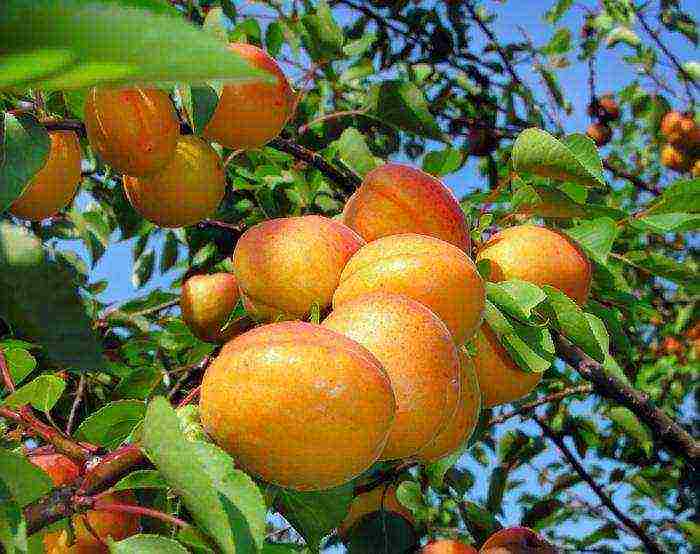
Apricot Iceberg.
Here are the best varieties of apricots that are suitable for the Moscow region. The fruits of this variety are distinguished by their pulp and sweet taste. The sour taste is completely absent. The variety is quite aromatic. It can be used not only for making sweet preserves, but also for juices and compotes. Yes, it is worth noting that the Iceberg apricot does not bloom very beautifully, and its fruits begin to sing only in the first decade of August.The apricot tree begins to give its first fruits only in the 3rd or 4th year after grafting.
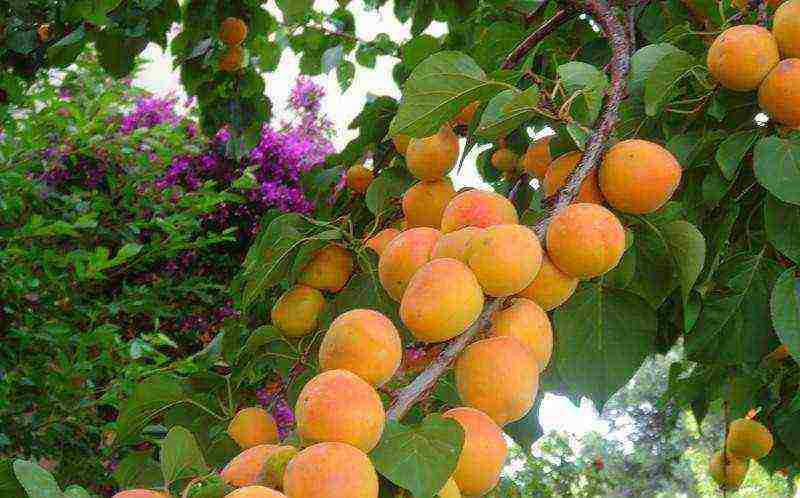
Apricot Aquarius.
This variety is a close relative of the very famous Lel variety. But it still has some of its own characteristics. Namely: it is distinguished by fleshy and rather large fruits, which has a bright blush and a pronounced seam. Fully ripe fruits have a yellowish-orange hue and a very pronounced honey taste. To its taste, this apricot has sweet and sour notes.
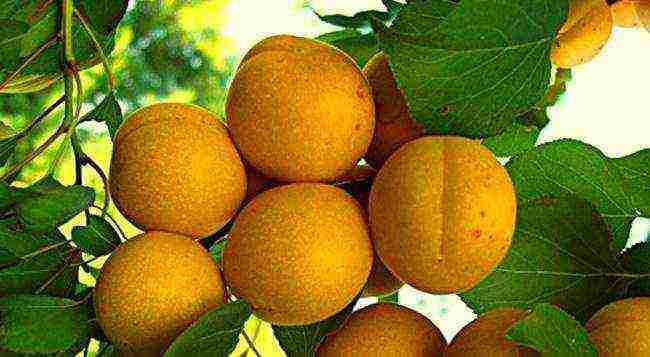
Apricot varieties Orlovchanin.
This variety has a rather late ripening. The fruits begin to sing fully at the end of August. They are well suited for raw consumption, and also for the preparation of various preservation. But it is worth noting that this variety is not stored for very long. It quickly begins to darken. The variety differs from others in very beautiful, pink fruits with a slight delicate blush.
It is a descendant of the Triumph Severny variety. This variety is also slightly similar to the Krasnoshekiy variety. But the shape of its fruit is not round, but slightly elongated. Apricot varieties Orlovchanin have a very pronounced sour taste. the fruits are hard. well suited for cooking compotes.
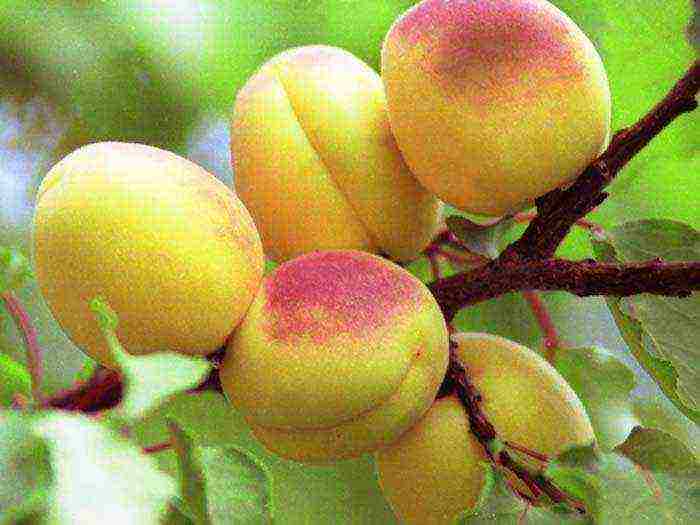
Apricot Red-cheeked.
What is the description of the variety for the apricot? It is enough to look at his photo, as well as to study the reviews. The next variety is a fairly well-known and inexpensive variety. He is very much appreciated in our country. And since it is not whimsical and tolerates frost well, it can be safely called the favorite variety of most summer residents. The variety can take root well both in the northern and southern regions. Proceeding from this, the apricot of the Krasnoshekiy variety can very often be found among gardeners. The variety differs from others in its sweet and sour taste and rich apricot aroma. The apricot stone of this variety can be eaten. it has no bitter taste. Apricot fruits are also suitable for making jams and compotes. It should be said that canned apricots of this variety in a glass jar can fully retain their summer aroma. It is for this quality that they love him.
On a note! The red-cheeked variety is the best apricot variety for the Moscow region.
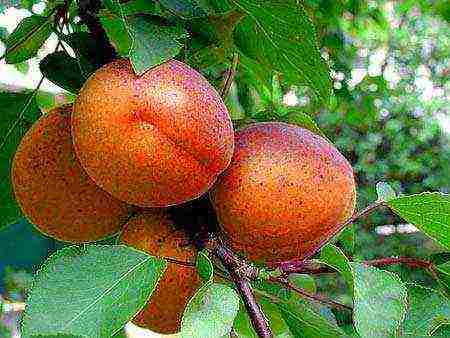
Apricot varieties that are grown in Ukraine
Pineapple variety.
Many medium-sized apricot varieties can be grown on the territory of Ukraine. And now it's worth listing their names. This variety has another name - Shalah. Differs in rather large, oval-shaped, pale yellow fruits. It is often found on the shelves of many stores. namely, where southern imported fruits are sold. The variety of this apricot is valuable for its very high resistance to many diseases and pests. Apricot is also prized for its sweet taste, slightly reminiscent of pineapple. Pineapple fruits can be easily recognized at the store counter. They are slightly larger than normal varieties, have a pronounced tuberosity and stand out from others with a pale yellow tint that resembles a pineapple slice. Apricot pits are long, but very tasty, without bitterness. This particular variety of apricot is loved by many people in Ukraine. It is also very popular in other countries where it can grow.
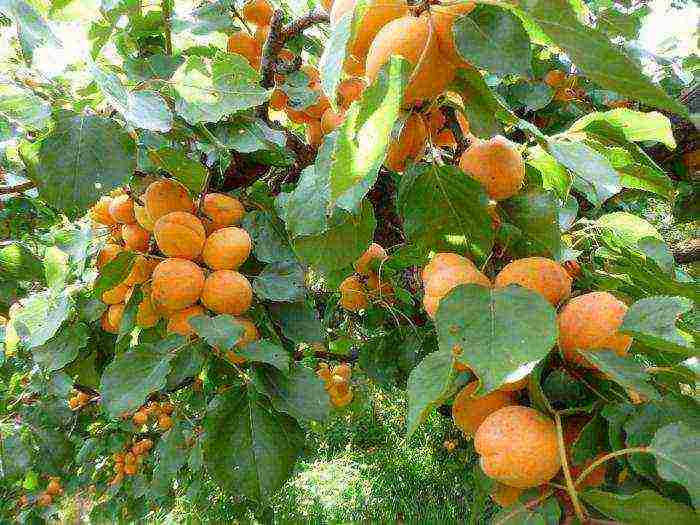
Melitopol early apricot.
This apricot variety was developed in Ukraine in the past. and to this day does not leave any of the gardeners indifferent. The best varieties of apricots included in the encyclopedia also include this variety. He is one of the most worthy. First of all, this variety is not whimsical in its care. It will not require you to water very often. Secondly, the fruits of this apricot have a thin skin and honey notes. It is this feature that does not leave indifferent anyone who has tasted this apricot variety at least once. It is best suited for fresh consumption rather than preservation. But it is worth noting that the jam from it turns out to be very aromatic and tasty.A very tender apricot variety Melitopol is early and develops rather quickly. Based on this, many experienced housewives advise mixing the fruits (for example, with apples or plums). But still, you will not be able to find a better variety in Ukraine according to your taste.
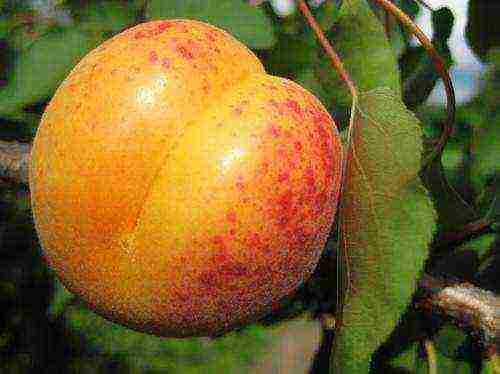
Columnar Apricot Star.
This variety can be grown not only on your own personal plot, but also near the house, in the garden, since it takes up quite a bit of space. He is also not whimsical in his care. In addition, this apricot variety begins to bear fruit as early as the 3rd year of growth, and produces very sweet and tasty fruits. This variety of columnar apricot differs from the others in its excellent resistance to all kinds of pests. he, too, will not require a lot of personal care.
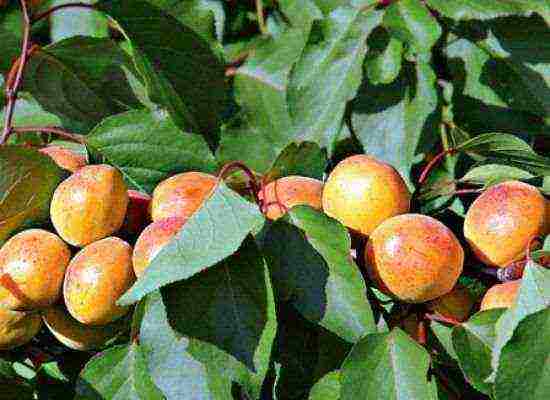
Apricot variety - Black velvet.
The fruits of this apricot variety are much smaller than the usual ones. But on the other hand, they are much more fragrant than the rest. The place of its growth is the south of Russia, the territory of Ukraine and Crimea. This variety has good resistance to drought and most pests, as it could appear in the process of crossing with cherry plum. It is the latter that is distinguished by its excellent resistance to all kinds of pests and diseases. The fruits of the Black Velvet variety begin to ripen in the last decade of July. They have a slightly tart aroma, which is somewhat reminiscent of the taste of honey apricot and plum. The fruits of this type of apricot have a yellow flesh with a slight shade of pink, closer to the middle. The fruit stone is not very large. It has a slightly elongated shape and a bitter taste. This variety was created specifically for canning. Based on this, we advise you not to eat it fresh, but to cook various compotes, preserves and jams. Black Velvet jam has a very beautiful rich color, aroma and taste. This variety of apricot has good resistance to frost, but despite this, many experts do not recommend cultivating it in regions with a cold climate, since the tree may simply stop producing full fruits, or it will be sterile. But it is worth noting that it is in the southern regions that this type of apricot may not give a good harvest.
There are a lot of apricot varieties in Ukraine, but nevertheless, it is the Black Velvet variety that can rightfully be considered the best.
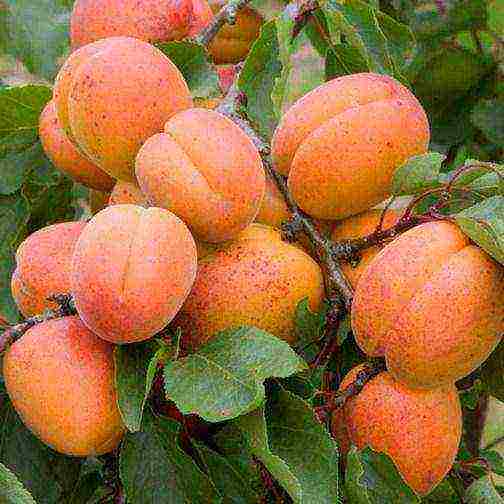
Other varieties of apricot for different regions of Russia
Apricot Le-32/76 Betinka.
Various northern varieties of apricots can also be found in our publication. Quite a rare variety of apricot. The next variety has a very bright, intense pink color and a delicate orange pulp. It differs from the rest in its extraordinary taste and rather rich aroma. The flesh of the apricot has a bright, orange color. Jam from this type of apricot will turn out to be very aromatic and interesting in taste. The fruits of this apricot variety begin to sing in the middle of summer. Differs in good frost resistance and is resistant to various pests. Apricot fruits may not spoil for a long time. on this basis, it is very popular commercially. In addition, this variety has good fertility.
Apricot Aurora.
It is the earliest apricot variety. Its fruits begin to ripen in the last decade of June. Very prolific. The fruits are quite large. They have a rounded shape in orange. This variety of apricot is distinguished by its rich sweet taste and apricot aroma. It can be preserved even after heat treatment in jam or compote. But still, we do not recommend storing conservation, as they say for the future. It is better to eat the fruits raw, since this variety is quite early and will delight you with a great taste already at the end of June.
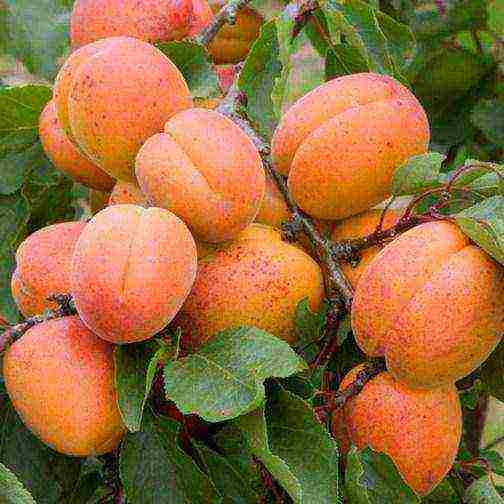
Honey variety of apricot.
This apricot variety got its name from its very rich, pronounced sweet taste, which has honey notes. Even in its appearance, the apricot indicates its content.It has rather large oval-shaped fruits and a rich orange-golden hue. Like most southern apricot varieties, this variety is very prolific. And new fruits are already beginning to appear in the last decade of July, early August. The pulp of this apricot variety is rather soft. It separates well from the bone. The fruits are also very soft. This means that this variety is not suitable for heat treatment. In addition, the Honey variety can tolerate transportation rather poorly. This means that it is not suitable for commerce. At the time of fruiting, we advise you to simply harvest the crop and use it raw, or make pies from the fruit.
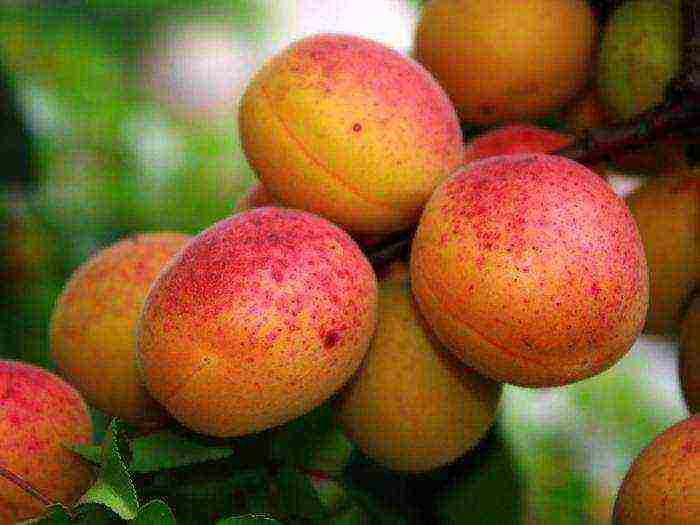
Apricot varieties Ahrori.
Differs in its unsurpassed taste. It has sweet and large, very fleshy fruits. This apricot variety is Asian. It is one of the earliest types of apricot. Its main advantage is considered to be excellent frost resistance. And the disadvantage is that the fruits of this variety can very poorly hold on to the stem and quickly crumble. But if you plant it near your own home, you will be happy with the result. Since the rich, sweet fruits will be quite difficult to come off. He will feel best in countries with a subtropical climate, or in the southern regions. This variety is rather difficult to transport. This means that it is better not to use it commercially, since the apricot fruit will become soft very quickly and deteriorate. But still, a very aromatic and tasty jam can be obtained from the fruits of this variety. But it is better not to use it for compote, since the fruits will very quickly begin to boil.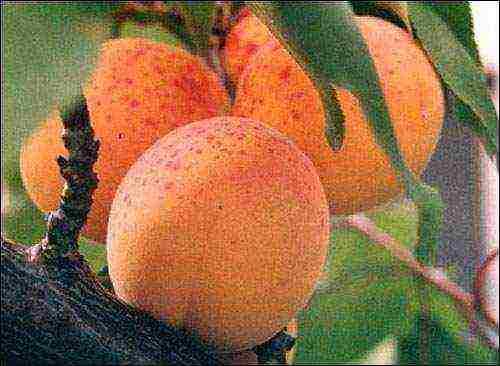
Canned late apricot.
Late varieties of apricot are also popular today. This kind of apricot begins to sing very late. Best suited for preservation preparation. The fruits of this variety are rather large. They have a pronounced seam, an oval shape that resembles an egg. The flesh of the fruit is very fleshy and has a sour taste. The bone is very sweet. This variety is not suitable for fresh consumption. But nevertheless, this variety can make a wide variety of excellent dishes: preserves, baking stuffing, jam and also canned apricots, which can be eaten with great pleasure in winter. The yield of this variety is average. The same goes for its resistance to frost and all kinds of pests.
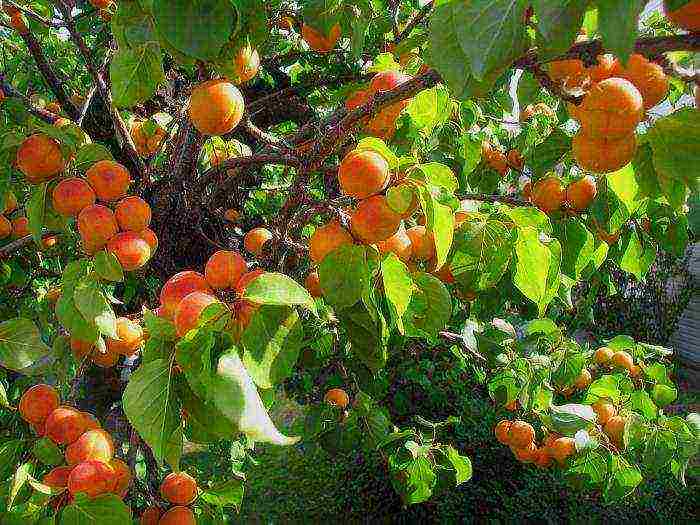
Home garden apricot.
This species has a very late flowering and bright yellow fruits with a golden hue. The fruit has a round shape. Suitable for raw food, and for preparing various syrups and juices, as well as fillings for baked goods and jams. Apricot variety - Home Garden can be eaten raw, as its fruits are very sweet and juicy. But it is worth noting that we recommend that you choose other varieties of apricot for drying. This species has good frost resistance. Fruits begin to ripen in mid-August.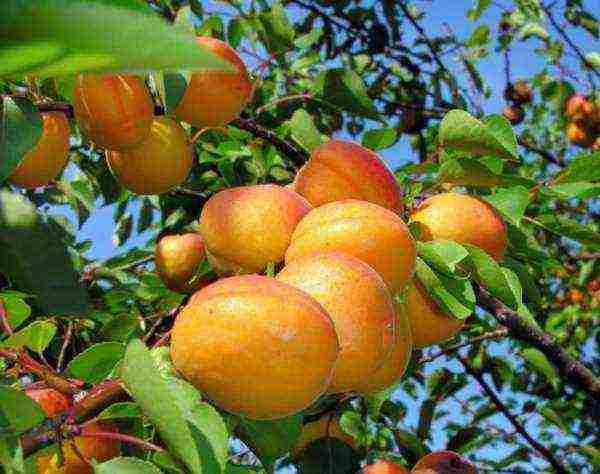
Pineapple tsurupin apricot.
If we compare this variety of apricot with the variety - Pineapple, then Tsyurupinsky has a rather soft pulp and a great aroma. It begins to bloom very late. But the very first fruits are able to give already with the onset of July or August. The tree of this apricot variety begins to bear fruit in the 3rd year. fruits of this variety are orange in color and slightly rounded. Not very large. Their pulp is fragrant, very soft. slightly resembles the taste of pineapple. The bone is sweet. This species has poor resistance to various diseases and pests. Best suited for heat treatment and conservation. But it is very resistant to frost. It is best suited for canning rather than raw. It takes root well in different regions of Ukraine, in the southern regions of Russia. the yield of this variety is average.But most gardeners love to grow it for its lack of bitter taste, and for its unrivaled notes of sweet, ripe pineapple.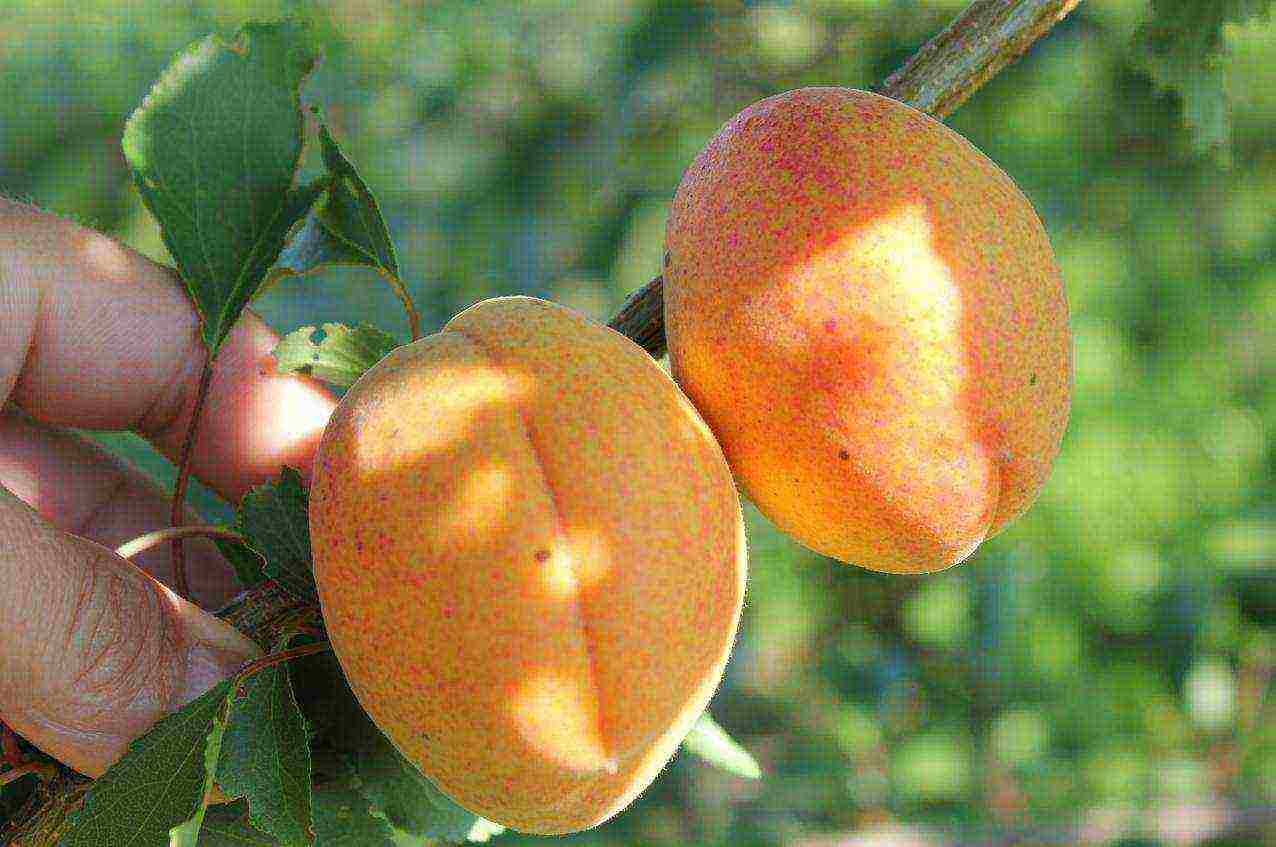
Finally
If you decide to plant an apricot in your garden, then you should study the many varieties that are suitable for the middle zone of our country.

